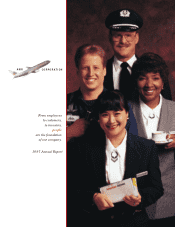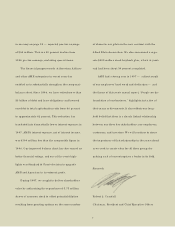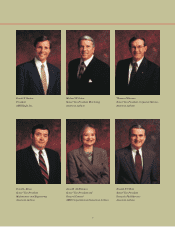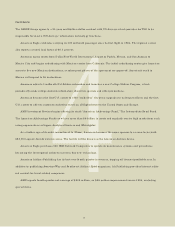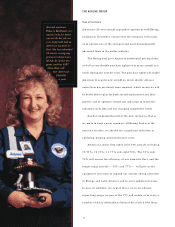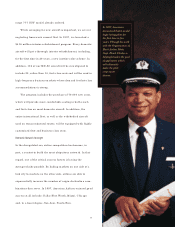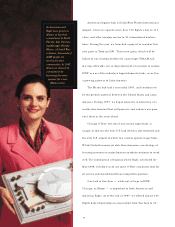American Airlines 1997 Annual Report Download - page 6
Download and view the complete annual report
Please find page 6 of the 1997 American Airlines annual report below. You can navigate through the pages in the report by either clicking on the pages listed below, or by using the keyword search tool below to find specific information within the annual report.
rejuvenation are discussed on page 15.
A third favorable development was the finaliza-
tion of an aircraft acquisition agreement with Boeing,
which will provide preferential pricing, great plan-
ning flexibility and the benefits of ever-increasing fleet
commonality during the next 20 years. The Boeing
arrangement, as well as other fleet-related initiatives,
are discussed in greater detail on page 12.
American Eagle also did a good deal of fleet plan-
ning in 1997, ordering 42 Embraer and 25 Canadair
regional jets, the first of which will enter service in
May 1998. The addition of jet aircraft to the Eagle’s
fleet will make it an even more effective feeder opera-
tion for American Airlines in the future and will
strengthen the airline’s domestic system substantially.
American is also steadily expanding its worldwide
presence by adding both new routes and more inter-
national partners, as detailed on page 16. Our most
ambitious project is our proposed alliance with
British Airways. Although approval of the alliance has
been substantially delayed, a frequent flyer agreement
with British Airways — which did not require regula-
tory approval — has enjoyed considerable success,
and we are hopeful that all elements of the alliance
will be approved and implemented during 1998.
The SABRE Group (TSG), which is the largest of
AMR’s non-airline businesses, also had an eventful
year, capped off by the signing of a 25-year multi-
billion dollar outsourcing agreement with US Airways.
During its first full year as a public company, TSG
attracted numerous new clients for its information
technology solutions business, while sustaining its
leadership position in electronic travel distribution.
For the year, TSG generated pre-tax earnings of $324
million, and a pre-tax margin of more than 18 percent.
AMR’s third segment, the Management Services
Group (MSG), is a collection of businesses whose
activities range from airline ground handling to tele-
marketing to investment services. While most of
MSG’s businesses did quite well in 1997, the telemar-
keting company suffered a substantial setback. As a
whole, the group — whose activities are highlighted
4

